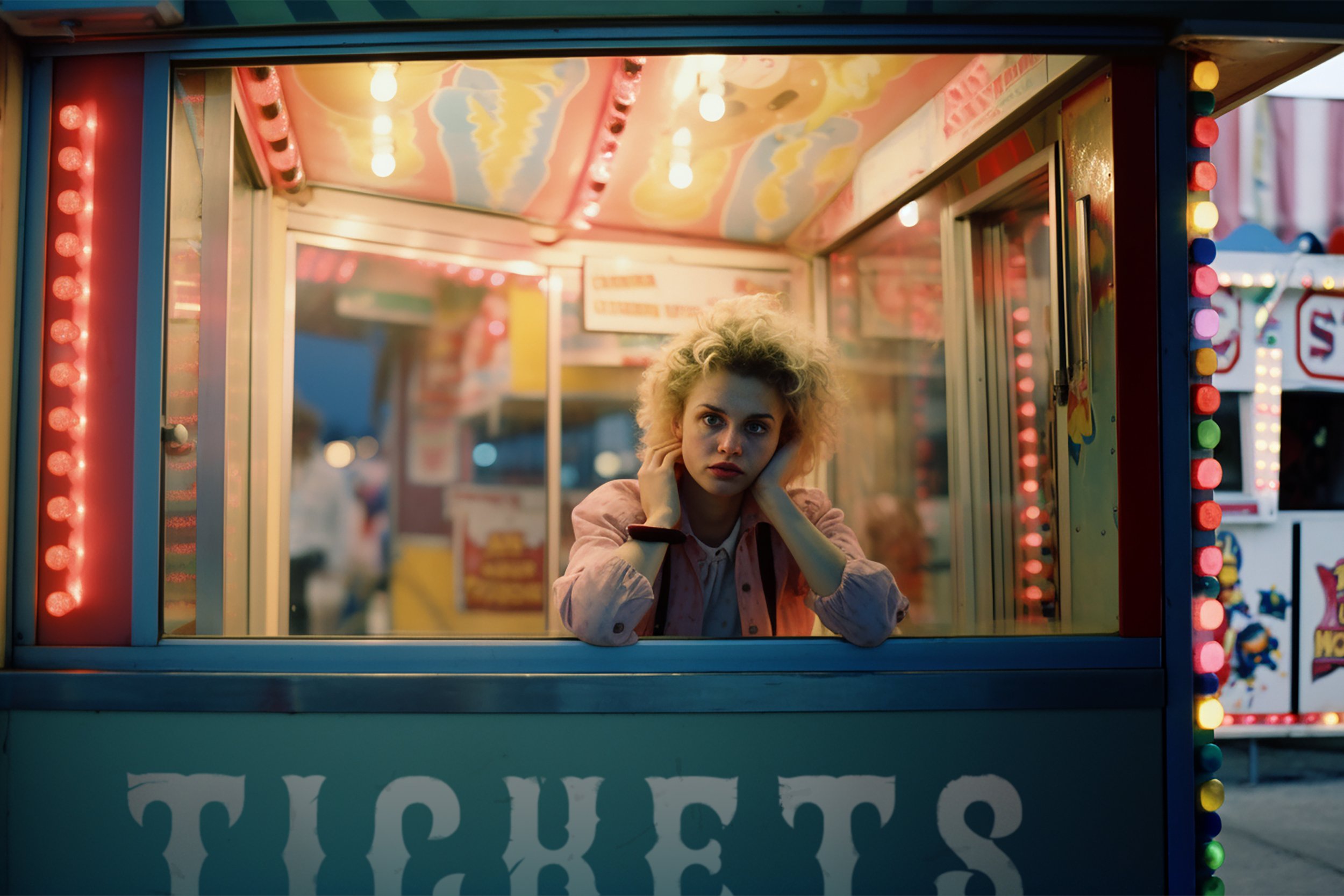TINKERING WITH AI-GENERATED CONTENT
Original output from Midjourney
After some Photoshopping
As a photographer, videographer, content producer, father, volunteer, homeowner, unpaid chauffeur, etc etc etc, I’m at the mercy of two principle things: time and access.
It started with the need to create a very specific image that I could not find online for my documentary film’s pitch deck. The tone, style, camera angle, etc. were key to me, and I could only find one photo after way too much time looking. Even then, that photo, an empty 70’s sedan parked at a slight angle on the side of a desolate road, looked a bit sinister - as if it had broken down there and its passengers had disappeared. So, since a photo shoot with actors/models was out of the question, I figured I’d create my own image with less of a hitchhiker-gone-wrong feel.
I learned how to use the AI bot Midjourney. I was quickly taken aback by the power of the imagery processing. The still-nascent AI engines produced images with cinematic light and perspective. There is a very deep pool of creative process that is being accessed and stitched together.
AI generated content is a base layer, albeit a very strong one, for a form of image creation. As the prompter, one has a certain amount of ‘digital god-like’ power to conjure up character, worlds, scenarios that one may not naturally come across in reality or with a paintbrush or camera lens.
I read a comment somewhere that it should be called “promptography” given that it’s ‘created’ through the use of an AI bot after one enters a series of specific prompts and parameters. I then take an initial render output and attempt to ‘fine tune’ it a bit further through visual references or additional prompts. In other words, I use phrasing and imagery to coax an image from the AI bot.
With the proper prompts and variation tweaks, the image came out somewhat closely to what I wanted. Below is the sole photograph I had (I did not reference it to train the AI bot), the final AI render, and the AI image after I’ve tweaked the road stripes and passengers in Photoshop.
Photo I’ve been using
Output from Midjourney
After light Photoshopping
When staring side-by-side, the AI images certainly lack the authentic and depth look of the photograph. But I foresee that gap continuing to rapidly close. For now, I continue to use the real photograph.
One could argue that AI image outputs (with human prompting) are not very far removed from some of Warhol’s work or Banksy’s use of existing elements. Art is inspired by and the imitation of life. AI is imitation of the AI bot’s analysis of the visual data of things labeled art and life. Then a human can tweak elements of the AI output to apply a top coat of paint or… simply a top coat.
Below are some observations after living in the Midjourney world for a few days:
Its understanding of light is absurdly impressive - ambient, direct, overhead, the glow of a marquee, sunlight filtered through trees - it’s really really good.
It struggles with foreground and background details/prompts. It can only parse out the prompts so much at this stage.
Its gender, race, age, and weight bias is quite apparent. It defaults heavily towards male, white, thin, and young. Background characters were often racially diverse in some settings, however.
There is bias towards ‘beautiful’ women when prompting in a standard environment (cafe, store, etc). To get a non-model looking character, I’d have to use phrasing like “bored, middle-aged, obese”. Even then it would overcompensate to sleepy, 80 y.o., 450 lbs subjects, respectively.
It defaults to environmental portraits with the subject staring at the camera. An alternative to direct eye-contact can be difficult to obtain.
I don’t have to respect AI, but I don’t have to fear it either. I feel I should appreciate how it works so that I can have a better view of the horizon. So far, I have a growing respect creeping in each day I use the AI bot and plugins. Right now I don’t see AI replacing photography, but rather assisting those content creators who leverage it.
Midjourney render after some Photoshopping
Midjourney render after some Photoshopping
At the time of this writing, Midjourney has nearly 16,000,000 members (over 1,200,000 members actively were online). That’s two NYC’s worth of people tinkering around. The more tinkering around, the smarter it gets. It’s only going to creep further into the content creation process, as it has been doing for years. TBD what that really means.
I’ll continue. I find it’s better to try to dive into that which we do not understand vs. labeling it an adversary or intruder (TBD whether it’s an adversary or intruder).
P.S. I started an Instagram account to highlight the outputs as I explore different themes. @going.ai.pictures







